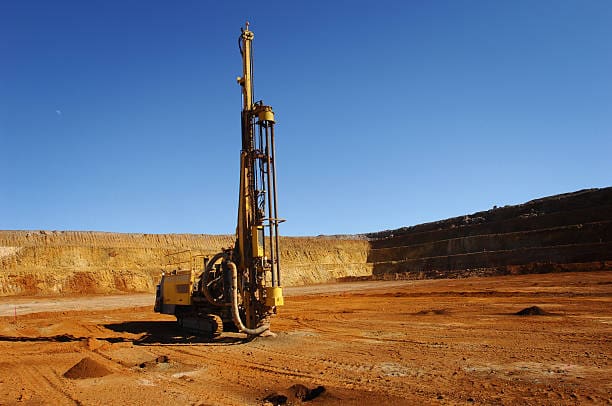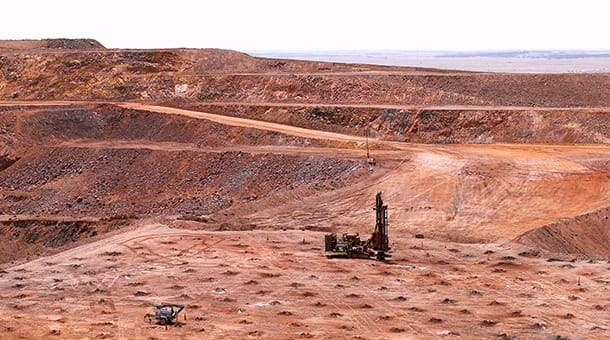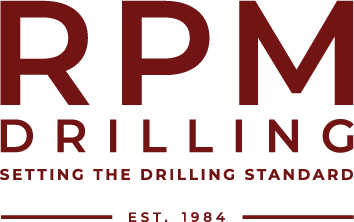Blast Hole Drilling: The Basic Process
The Basics About Blast Hole Drilling
What is Blast Hole Drilling?
Blast hole Drilling is a technique used in mining whereby a hole is drilled into the surface of the rock, packed with explosive material, and detonated. The aim of this technique is to induce cracks in the inner geology of the surrounding rock, in order to facilitate further drilling and associated mining activity.
The initial hole into which the explosives are packed is known as the “blast hole”. Blast hole drilling is one of the primary surface drilling techniques employed in mining operations today.
Where is Blast Hole Drilling Used?
Blast hole drilling is traditionally used wherever the mining company wants to explore the mineral composition or potential mineral yield of the area demarcated for their mining interests.
Blast holes are thus a fundamental step in the exploratory mining process, and can be employed in both surface mining operations and underground mining operations to varying degrees with varying effects or results.
Blast hole drilling can also be employed in quarrying endeavors.
Why is Blast Hole Drilling Used?
Blasthole drilling is essentially carried out in order to break up rock and hard minerals in order to make it easier for the mining crew to get to the resources being mined.

Basic Blast hole Drilling Process:
Step 1 – Surveying the location
Before the blast hole drilling can begin, the proposed site needs to be inspected, and certain decisions need to be made with regards to the hole size/diameter, the type of drill or drills that will be required, etc.
These decisions will be based on the findings of the initial site survey.
The site survey will analyse the nature of the proposed mining operation, the nature of the rock, soil, ground, and/or mineral in question, and will impact the road going forward with regard to the blast hole drilling processes.
Step 2 – Researching the rock types and formations
Once the surveying processes have provided the surveyors with the raw data, they will turn this data over to researchers, who will then do the necessary research in order to plan effective and safe drilling patterns.

Step 3 – Plan drilling patterns
Once the researchers have determined the most effective, efficient, and safest way to proceed, the project manager will take over and draw up the necessary drilling plans.
Step 4 – Drilling the blast holes
This is where the actual blast hole drilling starts.
So by now all the machinery will have been procured (hired, acquired, what have you) and will be on-site, and ready to begin drilling the blast holes! The researchers’ data will reveal how deep and how wide the diameter of the blast holes should be, as this will depend on the results of the survey.
In other words, on the nature of the mineral being mined, the nature of the surrounding rock/ground/soil etc.
Step 5 – Breaking up the rock
Once the blast holes have been drilled they will be packed with explosives. What kind, and the amount of explosives used will have been determined based on the research conducted; just like the size and depth of the blast hole was determined based on the research.
The explosives will then be remote-detonated in order to break up the rock.
Step 6 – Clean up process
Just like at a party, once the exciting part is over, somebody has to stay behind and clean up the mess! In underground mining, the tunnel will be cleared of debris, and the tunnel will be suitably reinforced.
Otherwise, as in open mine blasting, the rock will be excavated and hauled.

Blasting Techniques and Methods Used
Technique #1 – Open mine blasting
Open pit mining refers to mining minerals from, as the name suggests, an open pit; or may refer to any similar shallow mining operation. Open mine blasting plays a pivotal role in determining the needs of all other mining activities to come. From the loading and unloading, to transport considerations, the initial blasting will affect each and every activity that follows it. Therefore, effective blast design is paramount. The correct, or most effective blast design will always maximise fragmentation control; and will be developed based on the available data and research.

Technique #2 – Underground blasting
In underground mining, blasting becomes one of the primary methods of rock excavation. Studies are undertaken in everything from the effect of the vibration of the explosion, to the likely impact of the blast on the existent mining structures, prior to the blasting taking place.
As underground blasting is essentially a controlled cave-in, safety is a massive cause for concern, and all calculations and potential outcomes are checked and rechecked.
Once the blast has been achieved, the debris is cleared out, and the resultant tunnel is reinforced.
Technique #3 – Controlled blasting
Controlled blasting refers to a series of blasting techniques that can be employed when one aims to reduce the amount of overbreak or to control the extent of the resultant ground vibrations.
Controlled blasting techniques include: Pre-splitting (in which the purpose is to form a fracture plane beyond which the radial cracks from the blast cannot travel), Trim or Cushion blasting, Smooth, Perimeter or Contour blasting in underground mines, and muffle blasting (which addresses the need to prevent fly-rock from injuring individuals or damaging surrounding structures).
Technique #4 – Secondary blasting
Sometimes, no matter which method was initially employed, it may prove necessary to blast the same rock/location a second time in order to reduce the previously blasted portion of rock to a manageable size that can be easily handled by excavators, and/or crushers and other such machinery.
There are two available methods of secondary blasting. The first is plaster or mud-cap blasting.
This method involves firing a charge of explosive placed on the rock and covered with clay (or, a “mud-cap”). The concussive force of the blast further fragments the rock, breaking it up into more manageable pieces.
The second method is pop-shooting, which involved drilling a hole into the too-big blocks of rock and firing a small charge into this hole – in other words, it’s basically blasthole drilling in miniature.

Setup & Cleanup
Some of the equipment employed in excavating, hauling and processing the mined materials may include, but is not limited to:
- Underground haulers and trailers
- Standard haulers and trailers
- Bucket-wheel excavators
- Mobile crushing stations
- Stackers
- Reclaimers
- Spreaders
- Conveyor systems
For more information, or to see some examples of different kinds of blast hole drilling techniques, here are a few great video resources:
Drill and Blast 101 Webinar (30+ minutes), by Mark Bowater
OR, for a less formal approach, try:
“Let’s Blast!” (Blast hole drilling explained in description”, by PA Mining
“Excavation Process: Drilling, Blasting, and Excavation”, by Mining Videos
“Blast hole drilling” (underground), by Nevada Mining
“Blast hole drilling mining training simulator”, by ForgeFX Simulations
“Most Amazing Open-pit Mines in the World”, Igeo News
“Surface Blasting Drilling”, by Nevada Mining
So we hope that this article has briefed you on the basics of blast hole drilling. For more information, or to find out how RPM Drilling can be of service to you, or help you with your next project, please feel free to Contact Us via the contact form on our website, or by popping us an email, or giving us a call.
Tel: 023 342 5184 (Worcester)
082 568 1163 (Paarl)
or
Want to know more about Water Borehole Drilling, Water Resources and how to Save Water? Read these articles:
Water Borehole Drilling Process [In Only 4 Steps]
How Water Borehole Drilling Help Manage Our Water Resources
18 Practical Water Saving Tips You Can Use Every Day

